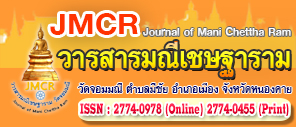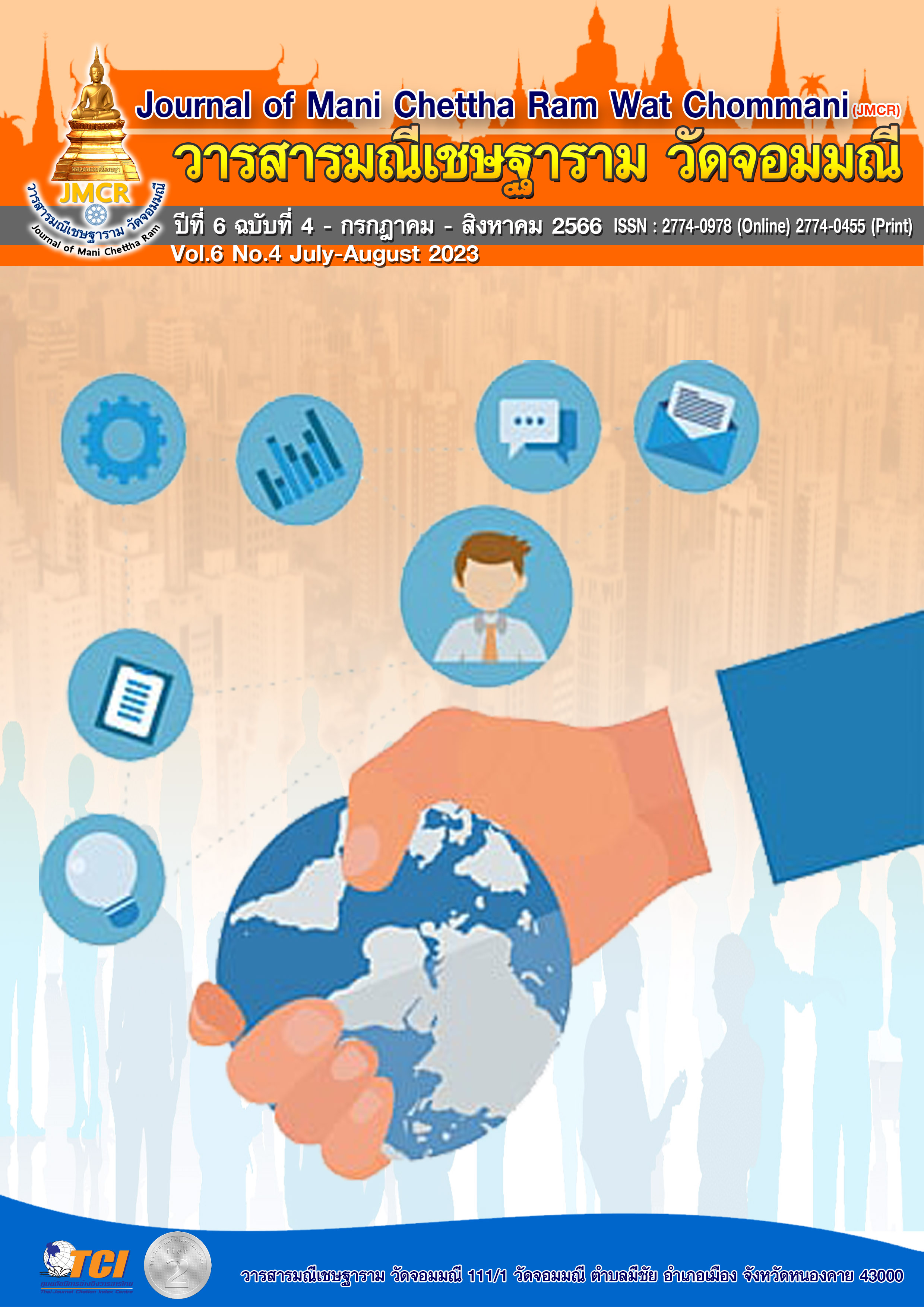DEVELOPMENT TEACHING IN THE DIGITAL AGE TO KALYANAMIT TADHAMMA VII OF TEACHERS IN EDUCATIONAL OPPORTUNITY EXPANSION SCHOOLS UNDER THE OFFICE OF PHITSANULOK PRIMARY EDUCATION SERVICE AREA 3
Keywords:
The Development Teaching in The Digital Age, The Kalyanamit Tadhamma ViiAbstract
This research objectives: 1) to study the development of teaching and learning in the digital age according to the 7 Kalayanamitdhamma principles of teachers in educational opportunities expanding schools; under the office of Phitsanulok Primary Educational Service Area Office 3 2) to compare the opinions about the development of teaching and learning in the digital age according to the Kalyanamittham 7 principles of teachers in educational opportunity expansion schools. Under the Office of Phitsanulok Primary Educational Service Area Office 3 classified by position, educational background and work experience. Under the Phitsanulok Primary Educational Service Area Office 3, the sample group used in the research were 175 people. Statistics used for data analysis were frequency, percentage, mean, standard deviation. and t-test the research findings were as follows: 1. The development of teaching and learning in the digital age of teachers. The overall level was at a high level. 2. The development of teaching and learning in the digital age according to the 7 Kalyanamitta Dhamma principles of teachers was at a high level overall. When considering each aspect, it was found that the aspect with the highest average was the teacher aspect, while the aspect with the lowest average was the kambhirancha kathang katta aspect. educational under the Office of Phitsanulok Primary Educational Service Area Office 3 with different positions, educational background and work experience. 4. Guidelines for the development of teaching and learning in the digital age according to the 7 Kalyanamitthamma principles of teachers, it was found that teachers must be the givers. intimacy with students Develop teaching and learning management to keep pace with various changes.
References
ชานนท์ คำปิวทา. (2555). รูปแบบการบริหารเพื่อส่งเสริมการจัดการเรียนรู้ในยุคดิจิทัลของครูโรงเรียน มัธยมศึกษา. ใน วิทยานิพนธ์ดุษฎีบัณฑิต สาขาวิชาการบริหารการศึกษา.มหาวิทยาลัยนเรศวร.
เดือนฉาย เงางาม. (2565). ภาวะผู้นำตามหลักกัลยาณมิตรธรรม 7 ของผู้บริหารสถานศึกษา สังกัดสำนักงานเขตพื้นที่การศึกษามัธยมศึกษาสุรินทร. วารสารพุทธปรัชญาวิวัฒน์, 6 (1), 39-40.
นารีรัตน์ กว้างขวาง. (2561). การบริหารงานโรงเรียนโดยใช้หลักกัลยาณมิตรธรรม 7 ของโรงเรียนในสังกัดสำนักงานเขตยานนาวา กรุงเทพมหานคร. ใน วิทยานิพนธ์หลักสูตรปริญญาพุทธศาสตรมหาบัณฑิต สาขาวิชาการบริหารการศึกษา. มหาวิทยาลัยมหาจุฬาลงกรณราชวิทยาลัย.
บุญชม ศรีสะอาด. (2554). การวิจัยเบื้องต้น พิมพ์ครั้งที่ 9. กรุงเทพมหานคร: สุวีริยาสาส์น.
พระมหาคำพันธุ์ รณญฺชโย (แสนยโยธิน). (2562). หลักกัลยาณมิตรธรรม 7 ในพระไตรปิฎกสำหรับครู. วารสารมหาจุฬานาครทรรศน์ ปีที่ 6 ฉบับที่ 9 (พฤศจิกายน 2562), 4201.
พระพรหมคุณาภรณ์ (ป.อ. ปยุตฺโต). (2548). ธรรมนูญชีวิต (พิมพ์ครั้งที่ 36). กรุงเทพมหานคร: โรงพิมพ์บริษัทสหธรรมิก จำกัด.
พระสมพล กิตฺติเมธี (เชื้อกล้า). (2563). การจัดการเรียนรู้ออนไลน์ในยุคดิจิทัล รายวิชาหน้าที่พลเมือง วัฒนธรรมและการดำเนินชีวิตในสังคม ของนักเรียนชั้นมัธยมศึกษาตอนต้นโรงเรียนคอนสารวิทยาคม จังหวัดชัยภูมิ. ใน วิทยานิพนธ์หลักสูตรปริญญาครุศาสตรมหาบัณฑิต สาขาวิชาการสอนสังคมศึกษา. มหาวิทยาลัยมหาจุฬาลงกรณราชวิทยาลัย.
พระธรรมปิฎก. (2546). พจนานุกรมพุทธศาสน์ ฉบับประมวลศัพท์. (พิมพ์ครั้งที่ 11). กรุงเทพมหานคร: มหาจุฬาลงกรณราชวิทยาลัย.
พระมหาคำพันธุ์ รณญฺชโย (แสนยโยธิน). (2562). หลักกัลยาณมิตรธรรม 7 ในพระไตรปิฎกสำหรับครู. วารสารมหาจุฬานาครทรรศน์, 6(9), 4199-4200.
Chaleysub, S. (2009). Phol: Thamhai hongsamut pen mak kwa “Hongsamut” In Hongsamut kansưksa wichachip bannaraksasat lae sarasonthet sat nai yuk kan plianpleang. Bangkok:Thai Library Association. 2009, pp.70-88.
Krejcie, R. V. & Morgan, D. W. (1970). Determining Sample Size for Research Activities. Educational and Psychological Measurement, 30(3), 607-610.
Oungvarakorn, S. (2015). Khru: Apiwat kan rianru sukhunnaphap kansưksa nai satawat thi yisipet. The Southern College Network Journal of Nursing and Public Health, 2(1), 2015, pp. 65-78.
Thailand Knowledge Park. (2014). Khid ruang sangkhom than khwamru kanchatkan khwamru kan rianru nai yuk dichithan. In Winithakun, W. (Ed.). Ruam mit khit rưang kan rianru, 2014, 3-5.


